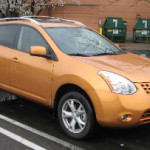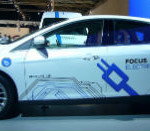What’s New With Self-Driving Cars?
Buckle up, buttercup. We’re about to take a trip with Ira Riklis around the world to look at the progress being made in the development of self-driving cars. Big names like Tesla, Ford, Honda, BMW, Nissan, Audi, and Mercedes-Benz are all in the race and jockeying for position. GM and Google’s Waymo are considered by many to be at the top of the list, with potential car-on-the-street start dates as early as 2019.
What Is A Self-Driving Car?
In case you haven’t been keeping up, the self-driving car may be the greatest technological advancement in travel since the internal combustion engine. A combination of traditional machinery action and computerized sensors and monitors, the highly-controversial vehicle can sense its environment, analyze the control options, and react with necessary changes faster and more reliably than any human. It is being promoted as safer, faster and more convenient than anything we have on the road today.
How Does It Work?
The variety of designs being developed focus on different strengths. Some employ the use of advanced sensors in various locations around the vehicle, and can ‘see’ other cars, traffic flow and potential obstacles for hundreds of yards around them. Others, like Google’s Waymo, relies heavily on maps and online input and updates. Combined with heavy computing power and logical reasoning, self-driving cars can process input information almost instantaneously and generate an immediate response.
The Inherent Problems
As with any technology, there are some problems that need to be worked out.
- Unusual Conditions. Probably the most unpredictable environmental concerns are weather changes. Sudden winds. Wet roads. Snow that limits visibility to humans as well as car sensors. Ice and snow accumulations. Black ice. So many possibilities, and so few easy solutions. One consolation is that human drivers haven’t been proven to handle these conditions very well, either. Every snowstorm begins with cars in the ditches along every major thoroughfare. It wouldn’t take a lot of technology to be an improvement.
- Surprise Events. We all know the world of driving is full of surprises. An animal jumps out. A child runs into the street. A piece of debris falls off the truck in front of you. A tree blows over in a storm. There are just too many unforeseen possibilities to have answers ready in the computer. The best solution so far has been to keep a ‘driver’ in the car and have the system alert them if a condition arises that it can’t handle. But as we all know, no passenger is suddenly going to be ready to engage in a life-or-death situation requiring split-second decision-making. There must be a better resolution to this problem.
- Overtrust. Surprisingly, one of the biggest problems that has cropped up in testing so far has been “overtrusting.” If you kick your autonomous vehicle into self-driving mode and sit back and relax, it can perform so well that you begin to forget about it. It’s turning, passing, merging, accelerating and braking right on cue, so you take your eyes off the road and do something else. Problem is, the car may reach a circumstance it can’t handle and need you again. Until the bugs are all worked out, you need to stay alert.
- Hacking/Cybercrime/Terrorism. As with all technology, there is always the possibility of a compromise in security. It may never happen, but there are those concerned that self-driving cars could become a tool for crime or terror that could affect millions at a time.
What’s In The Works?
Most companies are pushing for a slow ramp-up of self-driving technology. A vehicle that is partially driverless yet capable of taking control when asked would give people a chance to get to know the possibilities and build confidence in the system. As the bugs are worked out, the car can take over the work and leave us to enjoy the ride more than ever before.







